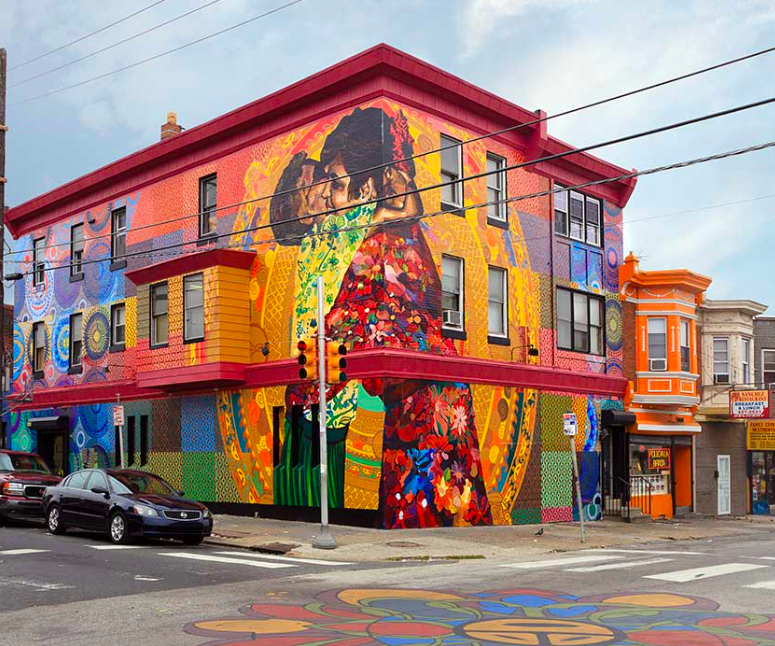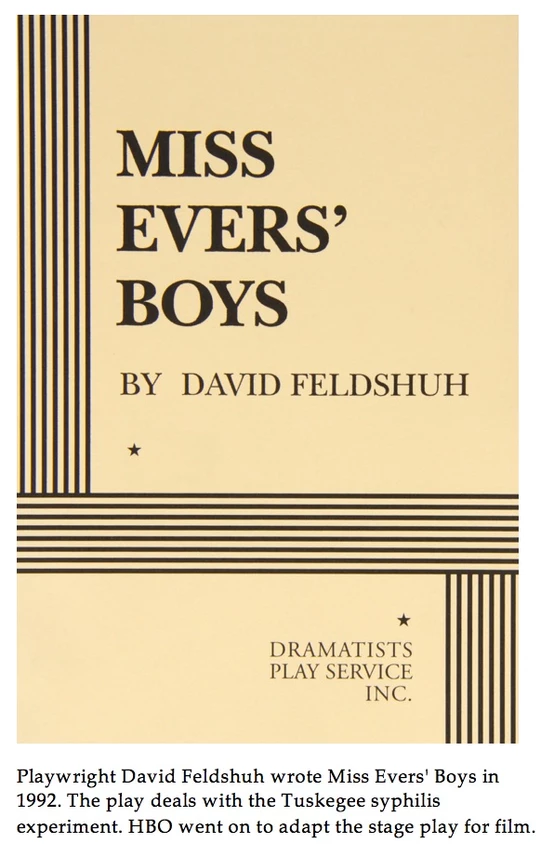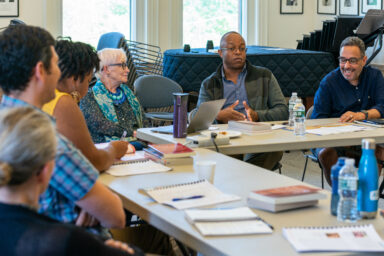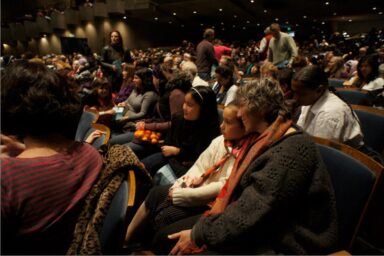A Call to Action for Arts and Public Health

For nine months during 2020 we navigated the worst crisis to hit the arts and culture sector in modern times. Diminished and weary, we soldiered on valiantly in the face of great adversity. In the summer months we read success stories about New Zealand and other places where proactive public health policies beat back the virus and cultural venues reopened. Many held out hope for a similar outcome in the US.
Regional efforts to contain the spread of the virus were sporadically successful. But the best we could hope for, given the patchwork of public health policies and limited will to enforce them, was to stave off the worst of it. Alas, the worst of it has arrived, and, despite the prospect of a more effective vaccine rollout under the Biden administration, the next few months will be gruesome by most accounts.
As of January 2021, the future of our sector is still unclear. Some cultural organizations have the resources to sit it out for another year, but many do not. Private foundations and individual donors, having stepped up to the challenge of relief capital, are depleted of funds—temporarily at least. Many arts organizations are banking on a resurgence of audience demand in 2021 (at least those fortunate enough to have reserved enough capital to finance their re-opening). The marketing and sales machinery is already grinding back into gear. Summer and fall programs are planned, with on-sale dates in April and May.
The problems with this scenario are two-fold: 1) facilities won’t be allowed to fully reopen in some states until the vaccination effort has been largely successful; and 2) regardless of the degree to which facilities are allowed to reopen, audiences may not be ready to return to live programs for quite some time.
The good news about vaccination
Results from the Audience Outlook Monitor study suggest that upwards of 90% of arts audiences will eventually get vaccinated. The figure is 95% or higher in many cities.
But there will be obstacles. Roughly 30% to 40% of arts audiences—despite their desire for immunity—are hesitant to get vaccinated. Concerns relate to potential side effects, mistrust of the vaccine, pre-existing health conditions, and beliefs that oppose vaccination. Moreover, results suggest that half of audience members will wait to go out, even after being vaccinated. Their readiness will depend on success with public adoption of the vaccines and a flattened curve of infection rates. Even then, the data suggests a segment of the audience—perhaps 10% to 20%—will not go out again until there is zero risk of infection.
On a positive note, attitudes about vaccination are changing rapidly. The percentage of audience members who say they’ll get vaccinated “right away” has nearly doubled from 20% to 40% in some cities, over a ten-week period from late September to early December.
The bad news about vaccination
It is comforting to think we might get to the point of 90%+ vaccination rates amongst audience members later in 2021, and it’s tempting to hold out the vision that going to the theatre will be safer than, say, going to the grocery store. This information might be useful in advocating for venues to reopen and it might help to build confidence amongst audiences and visitors, but it does not solve our problem.
All that matters now is the rate of success with vaccination amongst the general public. Venues in many areas won’t fully reopen until infection rates go way down. And we know that a substantial segment of the audience won’t return until herd immunity is in sight. Now, with Dr. Fauci ratcheting up the threshold for herd immunity as high as 80% to 85%, the challenge before us is daunting. According to the Pew Research Center (November 2020), only 60% of Americans will “Probably” or “Definitely” get vaccinated.
Whether or not 25% of Americans change their minds and get vaccinated will largely determine whether we reach herd immunity at all, and, therefore, public policy in regards to reopening of cultural facilities. If we do not reach the threshold for herd immunity, it will likely take years, not months, for Covid-19 to retreat to manageable levels. Seasonal surges could become the norm, accompanied by rolling lockdowns. In this scenario, many more cultural organizations will be forced to downsize beyond recognition or perish entirely.
Are we mere bystanders in this public health challenge?
What is required of the cultural sector now is not hibernation, but activation of our collective resources in support of the monumental public health initiative that lies before us. If you believe, as I do, that we as a sector have something vital to contribute to the public health challenge now facing our nation, then we are at a moral crossroads. Will we play the role of expectant observers, standing by while others take on the uphill battle of public health education and advocacy, or will we cast ourselves in an active, supporting role?
The future of our sector for the next decade hinges on public health outcomes over the next six to twelve months. Thus it strikes me as a moral imperative that we would join hands with our colleagues in public health and apply our creative processes and considerable assets to supporting their work. In fact, one might argue that nothing else really matters.
We have much to contribute
We have a good deal of experience working at the intersection of arts and health. In 2017, ArtPlace forged a partnership with the University of Florida Center for Arts in Medicine to explore frameworks for interdisciplinary collaboration. The resulting paper, “Creating Healthy Communities through Cross-Sector Collaborations”[1] offers a solid analysis and roadmap for the work we need to do. A growing practice of funding and scholarship revolves around the arts as a catalyst for well-being in both children and adults. Health and well-being have been priorities at the Australia Council for the Arts before and during the Covid-19 pandemic, both in terms of research and funding programs. A recent video conversation hosted by Adrian Collette, CEO of the Australia Council, explores the intersections of arts and mental health.
The Contagious Cities project, a deep dive into epidemic preparedness funded by the Wellcome Trust in London, ran from September 2018 to September 2019 in Berlin, Geneva, Hong Kong, and New York. The project partners co-produced artist residencies, exhibitions, interactive experiences, events, and broadcasts looking at the social, economic, and cultural effects of infectious disease. A treasure trove of other UK-based scholarly work around arts and health is archived at https://www.artshealthresources.org.uk/.
Many of you are already thinking in terms of what kinds of artistic programs you might bring forward to help your community process the prolonged emotional and psychological trauma of the pandemic. In a sense, well-being is our stock in trade.
Our communities need something more from us than the promise of regularly scheduled programming, however. Yes, a return to regular arts programming will bring a huge sense of relief to millions of Americans. But the more urgent need over the coming months is an arts-based dialogue about health, risk, and collective responsibility, drawing from the wealth of artistic invention and other assets at our disposal. Thanks to COVID-19, we’ve all been reminded of our mortality…again. Beyond the more obvious narratives around health and medical research, would this not be a good time to reexamine the mirage of “risk-free contact” and how we process existential risk as a society?
At the moment, I hear a good deal of erstwhile but non-specific talk amongst leaders of large institutions about the role of the arts in “civic healing” but little discussion of concrete strategies for programs that specifically address health and the intersection of health, racism, and economic injustice. Smaller, community-based organizations, meanwhile, have been active at this intersection for a long time. A broad framework is needed to allow artists and organizations of all kinds to see themselves in the larger effort. Such a framework would encompass:
- Artistic programming that surfaces issues of broad relevance to the current public health challenge, and related community engagement work around this artistic work.
- Activating artists to work in community settings to support health education efforts.
- Communications initiatives to disseminate public health information.
- Using cultural facilities to support testing, vaccination, and health education efforts.
What assets can we bring to the partnership with public health? Our artistic assets—our relationships with artists, our creative processes, and our technical know-how—are of primary importance. We can conceptualize and deliver programs that speak to health issues in ways that cannot be dispatched through advertising and public relations. This can be accomplished through both narrative and non-narrative forms, and delivered through both live and digital platforms including social media. We also have facilities that can be appropriated for health purposes, if necessary, and significant communications assets that reach deeply into our communities. Could our ticketing systems be used to book people into vaccination programs? Our capabilities and experience engaging communities, including our partnerships with community organizations, are perhaps our most valuable assets.
Sports heroes, film stars and music celebrities will get on the bandwagon and, hopefully, play a useful role in shaping public attitudes about vaccination, as famous photos of polio vaccinations illustrate so poignantly. But our work in the arts sector must go well beyond advocating for vaccination and embrace the fullness of health and well-being. We are uniquely positioned as a field to open up authentic, respectful conversations about the difficult choices we all must make about our own health, our vulnerabilities, how we think about risk, and how our choices affect the lives of others. Can you think of artistic works that directly address these issues? I can, and millions of Americans need to see them over the coming months, as well as new work.

There are strong arguments for concentrating the resources for this work on artists and organizations working with populations who’ve been disproportionately affected by COVID-19, including populations historically subjected to abuse by medical researchers. In fact, many BIPOC-led organizations, BIPOC artists, and community-based organizations have already stepped up to support their constituents in navigating the pandemic. More resources would go far in deepening their work. The arts-based health effort, however, needs to be as broad-based as possible. As with other types of education and advocacy work, the success of this dialogue will depend entirely on who is doing the talking. For this reason we need a plurality of voices, a diversity of artistic forms, and a range of engagement approaches.
Where is the leadership?
This work, quite naturally, would be coordinated at the national and state levels.
Unfortunately, it is hard to imagine our national agencies, at least at this moment in time, as having the financial capacity or political leverage to lead such an effort.
ArtPlace America, which shut down this year after a 10-year run at placing arts and culture at the core of community development, would be best suited to spearhead a sector-wide response. Could it be revived? State arts agencies and humanities councils could also play a role, although outside funding would be required, as there is no time for legislating. Some $25 million to $50 million would be needed to manage a coordinated national program, I figure. Perhaps more. And it would need to come soon, or it will be too late.
Where will such funding come from? The Biden administration’s next stimulus package? Private foundations are spent down on relief funding and things like reimagining public monuments. That leaves only a small pool of uber-philanthropists with the vision and will to commit to the kind of transformative investment that could reposition the entire sector for years to come.
More likely, this work will fall to the hundreds of individual organizations and artists who see opportunities to contribute to the public health effort in their own communities. Much good work will be done, but the lack of funding and coordination will prevent the effort from being scaled nationally.
One way or another, we simply must not stand by and watch the public health initiative fall short of its goals, and then complain when our venues don’t reopen soon enough. Politically and morally, the place we need to be for the next six to twelve months is on the front line of public health education work, standing proudly aside our partners in the health sector, and building on the community partnerships we have cultivated for decades.
The outcome of this work will not be measured in vaccinations, but in the breadth and intensity of the dialogue, and, in the long-run, the capacity of our diverse communities to come together around shared challenges.
The last time the arts sector flexed its collective muscle in response to a national crisis was the outpouring of programming immediately after 9/11. That was 20 years ago. Can we manage a sector-level programmatic response to COVID-19 and, in the process, illustrate the true power of our collective creativity? Or, will we retreat into our usual state of decentralized chaos?
Whether COVID-19’s debilitating impact on the cultural sector is a two-year event, or a ten-year event, hangs in the balance.
We look forward to publishing a compendium of critical responses to this essay in the next few weeks.
[1] Sonke, J., Golden, T., Francois, S., Hand, J., Chandra, A., Clemmons, L., Fakunle, D., Jackson, M.R., Magsamen, S., Rubin, V., Sams, K., Springs, S. (2019). Creating Healthy Communities through Cross-Sector Collaboration [White paper]. University of Florida Center for Arts in Medicine / ArtPlace America.



